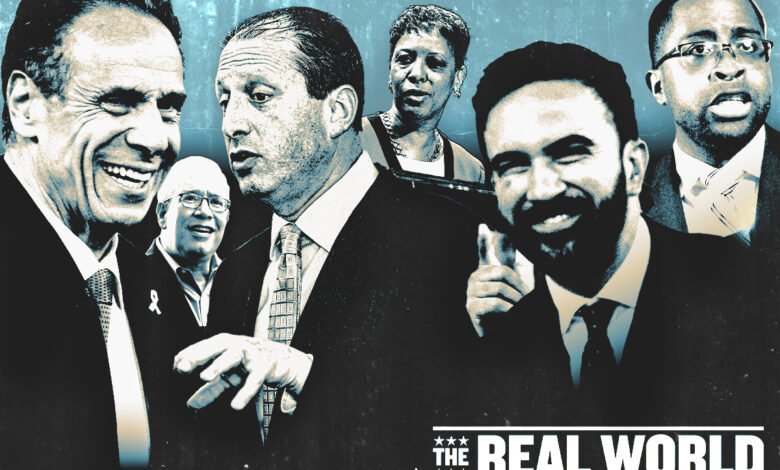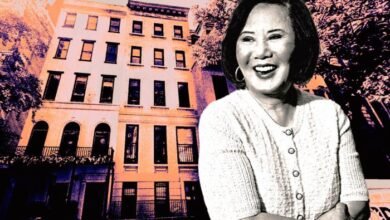NYC Mayoral Candidates’ Housing Plans: Which Rock, Which Suck

If you haven’t read all of the mayoral candidates’ housing plans, you’re off the hook: Here is a cheat sheet for this month’s Democratic primary.
With just a few minutes’ investment, you will learn which candidates’ proposals rock and which suck — or are woefully incomplete.
If nothing else, you will emerge with an ability to tell Zohran Mamdani’s door-knockers just how divorced from reality his campaign is.
But be warned: If you think Andrew Cuomo is all-in on housing, you will be disillusioned. Let’s start there.
Andrew Cuomo: The former governor’s 29-page plan calls for building or preserving 500,000 units, but the number seems hatched out of thin air. How many would he preserve versus build? Cuomo doesn’t say.
Cuomo endorses a lot of other people’s good ideas, such as letting churches build on their land, allowing more air-rights transfers and issuing RFPs for developers to put apartments over public schools and libraries.
One good suggestion I hadn’t heard before is to hire an outside firm to analyze city buildings for conversions, rather than ask agencies what space they are willing to give up. Cuomo also calls for $2.5 billion more city funding for housing — not exactly innovative, but progressive, for voters who are into that.
But don’t be fooled: Cuomo’s housing plan is among the most conservative in the race.
He rules out upzoning low-scale residential neighborhoods. He also fails to mention parking mandates (which should be eliminated) and his construction union endorsers’ 485x wage floor, which is stifling the development of housing.
Some industry people think Cuomo would take on the unions to fix 485x, given that he eventually got a deal on 421a (15 months after it expired). It’s wishful thinking. As governor, he sided with the paycheck-padding transit workers’ union against the MTA, and commuters ended up clawing their way out of stalled trains.
Zellnor Myrie: The state senator’s campaign never gained momentum, which is unfortunate because he has the boldest housing plan: 700,000 new homes in 10 years (half a million more than would otherwise be built).
To reach this goal, he would pass a “Mega Midtown” rezoning and (as others have proposed) build on underutilized land, like the Aqueduct racetrack and Brooklyn Marine Terminal. Myrie would rezone industrial land sandwiched between thriving residential areas to allow housing.
Myrie believes mixed-income housing, not just social housing, is needed, which is absolutely correct. He would discount property taxes and water bills for buildings in good repair. He’d also fill dilapidated rent-stabilized apartments by letting landlords collect the full value of a rental voucher — a good solution, which he jeopardizes by adding a “right of first refusal” for tenants to buy the building.
Brad Lander: The comptroller’s 36-page plan calls for 500,000 new units over 10 years, double the current pace. He would do more Gowanus-style rezonings and more nonprofit affordable housing development. The latter costs more per unit, but appeals to left-leaning voters — Lander’s base.
Lander would reduce Ulurp to 90 days, but pulls his punch by not saying which projects would be fast-tracked, except to say he would upzone to allow affordable co-ops. He would implement “form-based” zoning, which is based on building size and shape, not use, and triple HPD’s budget.
He pledges to make the Rent Guidelines Board more pro-tenant and to kill the board’s staff report, and calls himself a strong supporter of the Housing Stability and Tenant Protection Act and the proposed Tenant Opportunity to Purchase Act — all reasons for landlords to dislike him.
On the plus side, Lander would build housing on four city golf courses, let New Yorkers vote on the original City of Yes plan (which eliminated parking mandates), and allow co-living, co-housing and accessory dwelling units.
Zohran Mamdani: The Queens senator blames the housing crisis on insufficient public spending, not on government rules that limit supply and raise costs.
The fiction of his housing plan is political (how would he borrow $70 billion?), mathematical (20,000 new, union-built, taxpayer-funded, permanently subsidized and affordable homes per year for only $500,000 apiece!) and geographical (where would all this public housing go?).
His repeated calls for a freeze on stabilized rents have propelled his candidacy but perpetuated the notion that regulated rents should have nothing to do with operating costs.
Mamdani would fast-track affordable, union-built housing but not the mixed-income projects that create the bulk of the city’s new supply. In fact, he would choke off housing production by demanding any new units be rent-stabilized.
Two pieces of his plan that would benefit the industry are upzoning and ending parking minimums. But they would be useless if private projects did not pencil out.
Adrienne Adams: As City Council speaker, she has been a strong supporter of housing development. But if she has proposed any ideas to boost production other than by spending more public money, I haven’t seen them. The housing policy on her website is exactly one sentence, which says she is “always putting what New Yorkers need ahead of what developers and special interests want.”
Scott Stringer: The first line of his housing plan describes a single mother in Washington Heights “terrified of losing her home after her landlord raised the rent overnight.” He doesn’t seem to realize that if housing were abundant, that would not happen.
Another bad sign: Like Cuomo and general election candidates Jim Walden and Curtis Sliwa, Stringer would keep a private statue garden on city land in Nolita rather than let Pennrose build senior affordable housing.
It’s only one project in a huge city, but Stringer’s position reflects his failure to grasp the scope of the housing shortage, as does his housing plan, which calls for a mere 20,000 units over five years. That’s about 15 percent more than is being built now.
Stringer calls his rivals’ housing plans “pie in the sky.” That’s true in Mamdani’s case, but the others’ numbers are achievable; in the early 1960s, the industry built 50,000 homes a year — and 70,000 earlier in the century.
Stringer says he would build affordable housing on city land, ignoring the limited supply of subsidies, the slow pace of bureaucracy and the higher per-unit cost of such projects.
“When the land is free, and you link with not-for-profit developers or limited-profit developers, we have a real opportunity to build tens of thousands of affordable housing units in an accelerated time frame,” he told TRD’s Kathryn Brenzel.
Pie in the sky? Check.
Read more

“Unmitigated disaster”: Socialist’s $100B housing plan

The Daily Dirt: Picking apart Cuomo’s ChatGPT-powered housing plan

REBNY’s PAC attacks Chris Marte over allegations against aide




